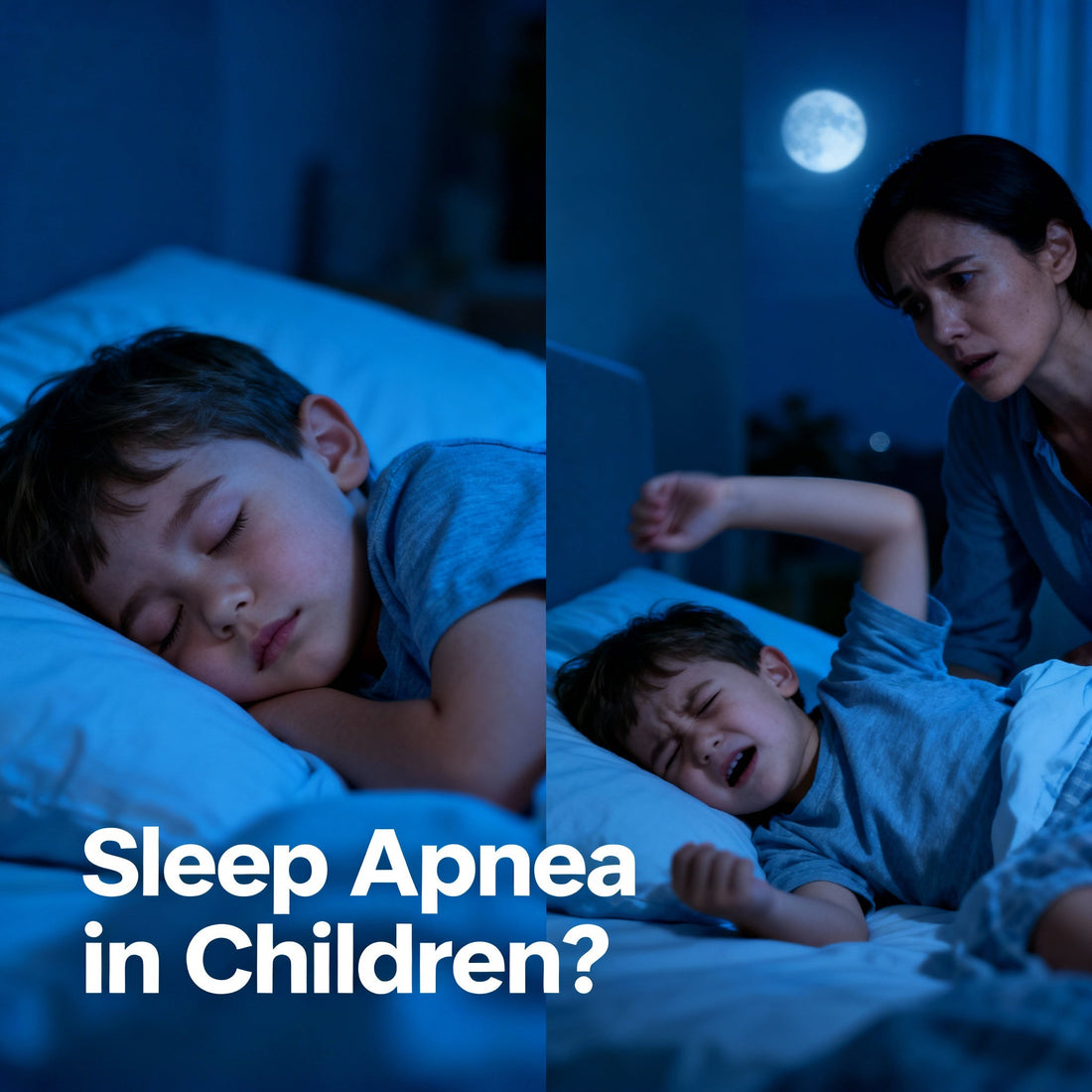
Sleep Apnea in Children – Warning Signs Parents Should Know
Share
Introduction
Sleep is vital for a child’s growth, learning, and emotional well-being. But what happens when a child’s sleep is constantly interrupted — not by nightmares, but by something far more serious?
Sleep apnea in children is an often-overlooked condition that can affect mood, behavior, learning, and overall health. Recognizing the warning signs early can make all the difference in your child’s life.
What Is Sleep Apnea in Children?
Sleep apnea is a sleep disorder where breathing repeatedly stops and starts during sleep. In children, the most common type is obstructive sleep apnea (OSA) — caused when the airway becomes blocked due to enlarged tonsils, adenoids, or obesity.
Unlike adults, children may not always appear tired. Instead, their symptoms often show up as behavioral or learning problems.
Common Warning Signs Parents Should Watch For
1. Loud or Frequent Snoring
Occasional snoring is common, but if your child snores loudly most nights, it could be a sign of obstructed breathing.
2. Pauses in Breathing or Gasping for Air
If you notice your child suddenly stops breathing for a few seconds and then gasps or chokes, consult a doctor immediately.
3. Restless Sleep or Sleeping in Odd Positions
Children with sleep apnea may toss and turn, sweat excessively, or sleep with their head tilted backward to open the airway.
4. Bedwetting (Enuresis)
Persistent bedwetting after age 6 can sometimes be linked to disrupted sleep patterns from sleep apnea.
5. Daytime Sleepiness or Hyperactivity
Unlike adults who become drowsy, children with sleep apnea often show hyperactive or impulsive behavior, similar to ADHD symptoms.
6. Difficulty Waking Up or Morning Headaches
Poor oxygen flow during sleep can lead to headaches and grogginess in the morning.
7. Mouth Breathing and Dry Mouth
Children who breathe through their mouth during the night may wake up with dry mouth or sore throat.
What Causes Sleep Apnea in Children?
- Some of the most common causes include:
- Enlarged tonsils or adenoids
- Obesity or excess weight
- Allergies or nasal congestion
- Family history of sleep apnea
- Neuromuscular disorders
A medical evaluation, often including a sleep study (polysomnography), can confirm the diagnosis.
Why Early Detection Matters
Untreated sleep apnea can affect a child’s:
- Growth and development
- Academic performance
- Heart and lung health
- Emotional stability
Children with sleep apnea may struggle in school, have mood swings, or experience delayed growth due to low oxygen levels during sleep.
Treatment Options for Sleep Apnea in Children
- Tonsillectomy or Adenoidectomy – Removing enlarged tonsils/adenoids often resolves the issue.
- Weight Management – Maintaining a healthy weight can help reduce airway obstruction.
- CPAP Therapy – For severe cases, a CPAP (Continuous Positive Airway Pressure) machine may be prescribed.
- Allergy Management – Treating allergies or nasal congestion improves airflow.
- Lifestyle Changes – Encouraging side sleeping, regular exercise, and a consistent sleep schedule can support better breathing at night.
Tips for Parents
- Record your child’s sleep or snoring patterns to show the pediatrician.
- Encourage nose breathing and avoid excessive screen time before bed.
- Ensure your child’s room is quiet, dark, and cool for better sleep quality.
Conclusion
- Sleep apnea in children is more common than many parents realize — but it’s also highly treatable. Paying attention to early warning signs can prevent long-term health issues and help your child get the restful, healthy sleep they need to grow and thrive.
If you notice any of the symptoms mentioned above, consult a pediatrician or sleep specialist. A few simple tests could make a world of difference.
